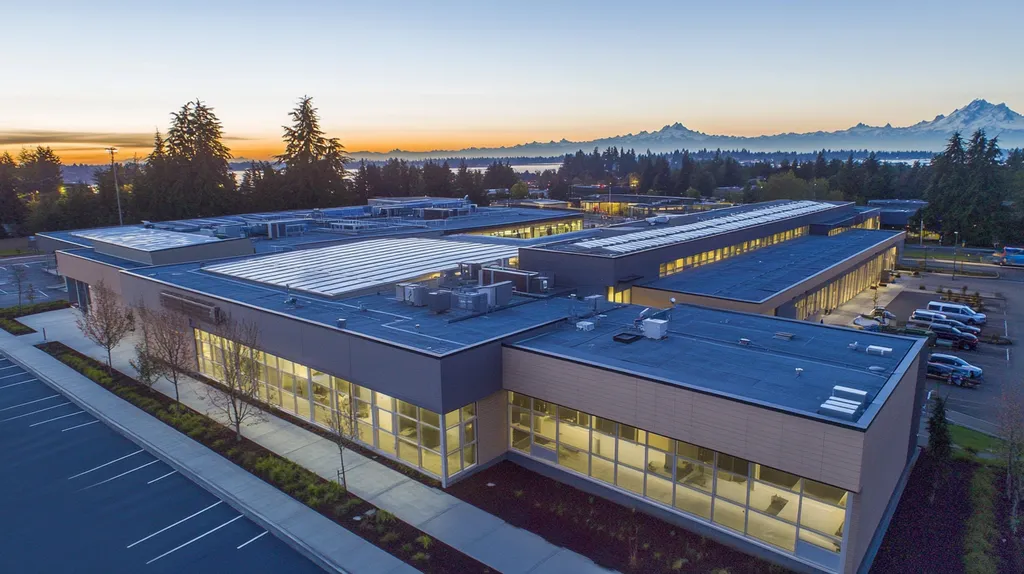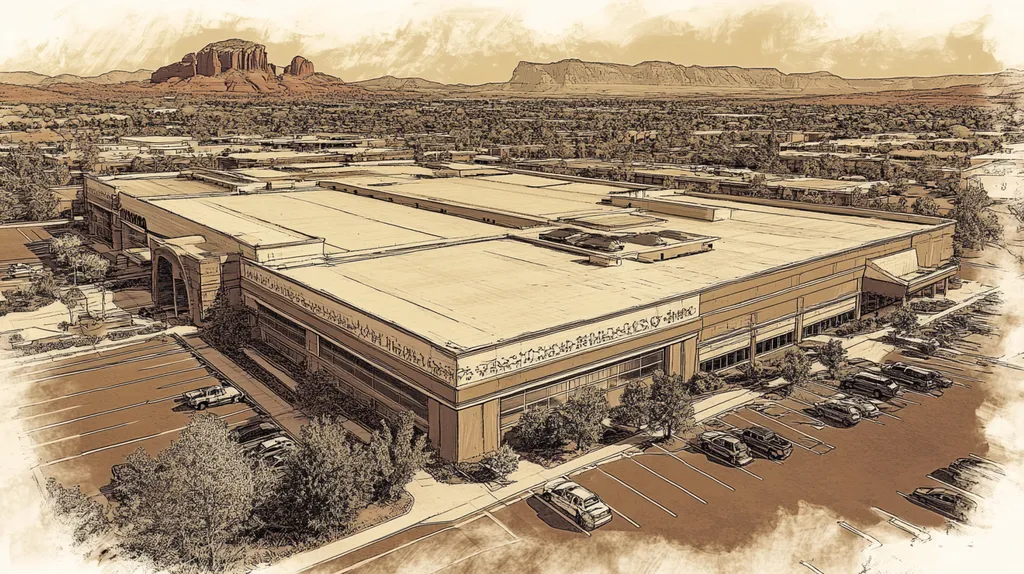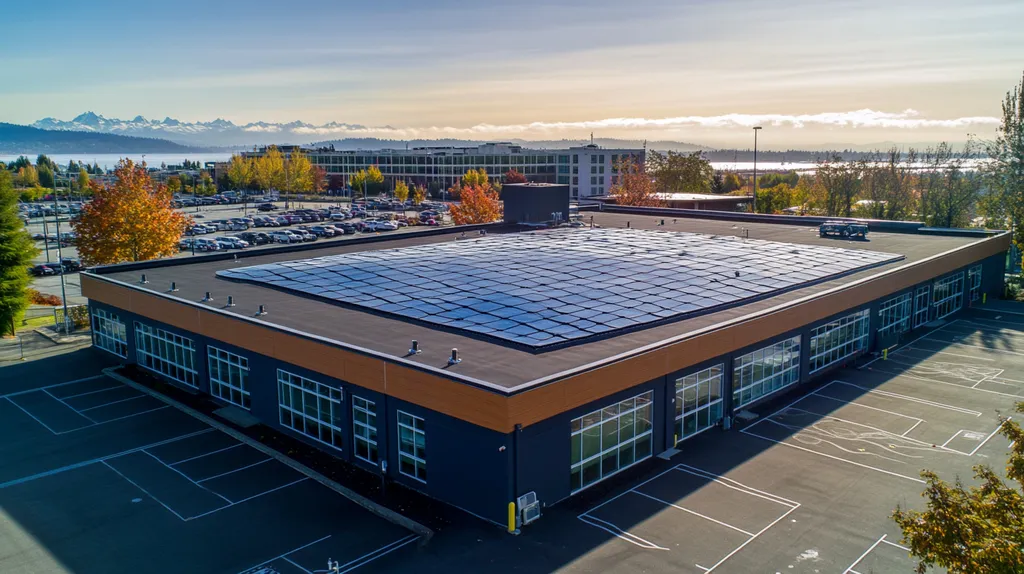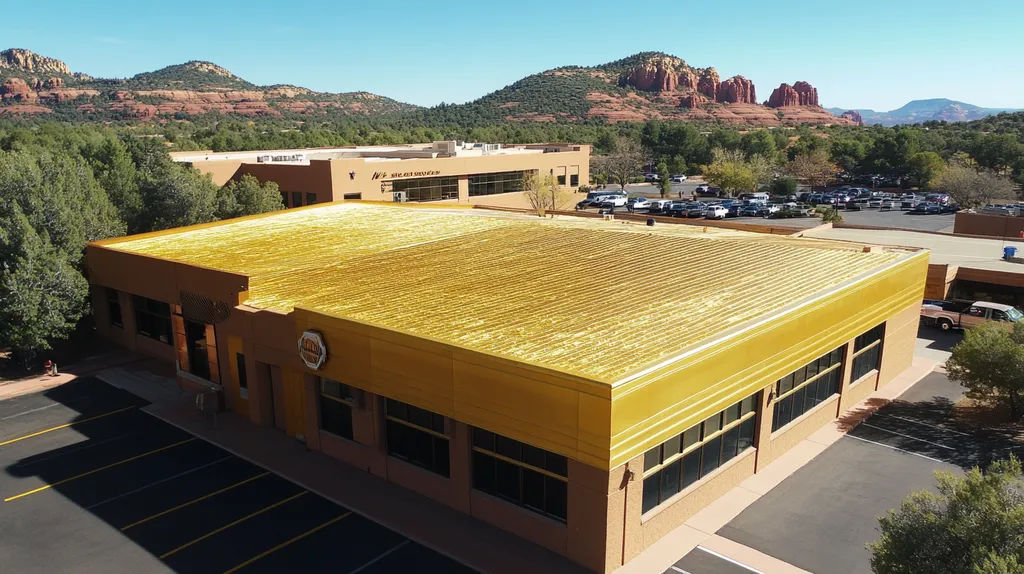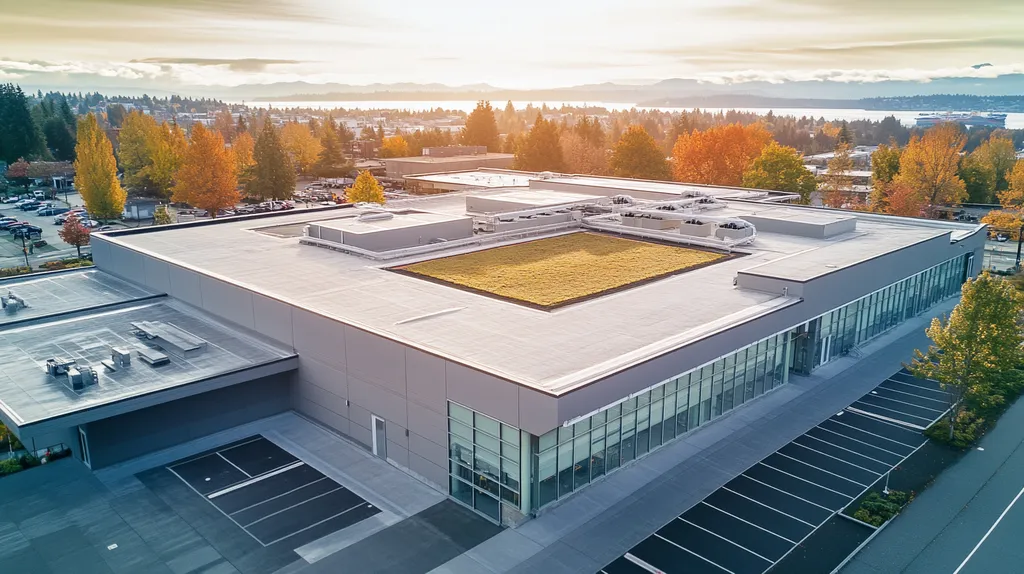Commercial property owners lose millions annually through inadequate roof maintenance budgeting, with 85% of roofs being replaced prematurely due to preventable damage. Current budgeting practices typically allocate only 1-3% of building value for maintenance, creating a severe disconnect between resources and actual requirements.
This systematic underfunding leads to accelerated deterioration, unexpected repairs, and shortened roof lifespans that multiply lifetime costs by 300-400%. Without a fundamental shift in maintenance budgeting approaches, property owners will continue facing unnecessary capital expenses and premature roof replacements.
This analysis examines why traditional budgeting methods fail, identifies critical systemic issues, and presents data-driven alternatives that can dramatically reduce lifetime roofing costs while extending service life.
SECTION 1: CURRENT PRACTICES
Commercial roof maintenance continues to suffer from outdated budgeting approaches that fail to address long-term costs and preventive care. Most properties operate with maintenance budgets that grossly underestimate both immediate needs and future expenses. The disconnect between allocated resources and actual requirements leads to accelerated deterioration, unexpected repairs, and premature roof replacement. Understanding these prevalent practices reveals why many commercial properties face mounting roofing challenges.
Standard Annual Budget Allocations and Their Limitations
Most commercial properties allocate between 1-3% of their building’s value annually for roof maintenance and repairs. This standardized approach fails to account for critical variables such as roof age, system type, or local weather conditions. (source: Stone Roofing Company, Inc.)
Fixed percentage allocations create artificial constraints that prevent proper maintenance scheduling. When budgets are determined solely by building value, older roofs requiring increased attention often receive inadequate funding.
The impact of insufficient budgeting compounds over time. Minor issues escalate into major problems, creating a cycle of reactive repairs that cost significantly more than preventive maintenance would have required.
Budget limitations frequently force property managers to postpone necessary maintenance. This deferred maintenance accelerates deterioration and can void manufacturer warranties, leading to premature roof replacement.
Conventional Inspection Frequencies and Protocols
Current inspection practices typically follow a twice-yearly schedule, usually in spring and fall. This minimal frequency leaves properties vulnerable to developing issues that go undetected for months between inspections.
Standard visual inspections often miss underlying problems that require specialized detection methods. Without comprehensive evaluation protocols, including moisture scanning and membrane testing, significant issues can develop unnoticed.
Weather-related damage frequently goes undocumented between scheduled inspections. The lack of post-storm assessments allows minor impact damage to develop into serious leaks and structural concerns.
Many properties lack systematic documentation of inspection findings. This gap in record-keeping makes it difficult to track deterioration patterns and plan for future maintenance needs.
Typical Maintenance Tasks and Cost Expectations
Basic maintenance routines usually focus on surface-level tasks like debris removal and drain clearing. While essential, this limited scope overlooks crucial preventive measures that could extend roof life.
Current maintenance protocols rarely include proactive treatments such as protective coatings or systematic seam reinforcement. These preventive measures, though initially more expensive, can significantly reduce long-term repair costs.
Emergency repairs frequently consume maintenance budgets intended for preventive care. This reactive spending pattern creates a cycle where preventive maintenance becomes increasingly difficult to fund.
The true cost of maintenance often exceeds initial budget projections by 30-50%. Properties operating under conventional budgeting practices face constant pressure to defer important maintenance tasks, creating cumulative damage that accelerates roof deterioration.
SECTION 2: SYSTEMIC ISSUES
Systemic flaws in commercial roof maintenance continue to plague the industry, with repair costs often exceeding initial budgets by 50-75% due to inadequate planning. The consequences extend beyond immediate financial impacts, affecting building operations, tenant satisfaction, and property values. Understanding these fundamental issues reveals why traditional maintenance approaches consistently fall short of protecting this critical building asset.
Underfunding and Reactive Budgeting Pitfalls
The persistent underfunding of roof maintenance stems from a fundamental misunderstanding of long-term cost implications. When properties allocate insufficient resources, minor issues escalate into major structural problems requiring extensive repairs.
Emergency repairs typically cost 3-4 times more than scheduled maintenance interventions. This reactive approach drains resources that could have been used for preventive measures, creating a self-perpetuating cycle of deterioration.
Budget constraints often force maintenance teams to implement temporary fixes rather than permanent solutions. These short-term repairs mask underlying issues while allowing progressive damage to continue unchecked.
The true impact of underfunding extends beyond direct repair costs to include increased energy expenses, interior damage, and shortened roof lifespan. These hidden costs significantly multiply the financial burden of inadequate maintenance budgets.
Inadequate Inspection Rigor and Documentation Gaps
Superficial inspection practices fail to identify developing problems before they become severe. Many properties rely on visual assessments alone, missing critical issues that require specialized diagnostic tools to detect.
Poor documentation practices make it impossible to track deterioration patterns effectively. Without detailed records of past issues and repairs, maintenance teams cannot identify recurring problems or predict future maintenance needs.
The lack of standardized inspection protocols leads to inconsistent evaluations across different inspectors or time periods. This variability makes it difficult to establish reliable baseline conditions or track changes accurately.
Incomplete documentation often results in lost warranty coverage and insurance claim denials. When problems arise, the absence of proper records can leave property owners without recourse for recovering repair costs.
Misalignment Between Maintenance Plans and Roof Lifecycles
Standard maintenance schedules often fail to account for specific roof system requirements. Different roofing materials and installations demand unique maintenance approaches that generic plans cannot adequately address.
Many properties lack clear lifecycle management strategies that align maintenance activities with roof age and condition. This disconnect leads to inappropriate timing of repairs and missed opportunities for preventive care.
The failure to adjust maintenance plans as roofs age results in inadequate care during critical periods. Older systems require more frequent inspections and interventions, yet often receive the same level of attention as newer installations.
Properties frequently overlook the impact of local climate conditions on maintenance needs. Regional weather patterns, UV exposure, and pollution levels should influence maintenance schedules but rarely factor into planning decisions.
SECTION 3: MISSED OPPORTUNITIES
Commercial property owners leave substantial value on the table through inadequate roof maintenance strategies. Studies indicate that 85% of commercial roofs are replaced prematurely due to insufficient maintenance, while properly maintained systems often exceed their expected service life by 5-10 years. This systemic failure to capture available cost savings and asset protection represents billions in unnecessary expenses across the commercial real estate sector.
Benefits Overlooked by Skipping Preventative Maintenance
Comprehensive maintenance programs can extend roof life by 50-100% compared to reactive maintenance approaches. Regular inspections and timely repairs prevent minor issues from escalating into major structural problems requiring extensive reconstruction.
Preventive maintenance dramatically reduces emergency repair costs, which typically run 3-5 times higher than scheduled maintenance. These savings compound over time through reduced structural damage, lower energy costs, and fewer business disruptions.
Well-maintained roofs provide superior protection for building contents and operations. Water infiltration from neglected roofs commonly leads to inventory damage, equipment failures, and business interruptions that far exceed maintenance costs.
Proactive maintenance preserves warranty coverage and strengthens insurance claims. Many warranty and insurance claims are denied due to documented maintenance neglect, leaving owners fully exposed to repair and replacement costs.
Data Utilization Deficits in Budget Planning
Most properties fail to leverage available performance data for maintenance planning. Digital monitoring systems can track membrane deterioration, moisture infiltration, and structural movement in real-time, enabling precise maintenance scheduling.
Modern diagnostic tools provide detailed insights into roof condition and performance metrics. Infrared scanning, electronic leak detection, and core analysis deliver actionable data for optimizing maintenance timing and scope.
Weather pattern analysis helps predict maintenance needs and timing. Historical weather data combined with roof condition metrics enables properties to schedule maintenance during optimal weather windows.
Lifecycle cost tracking reveals the true financial impact of maintenance decisions. Properties that document maintenance costs against performance outcomes consistently demonstrate superior return on maintenance investments.
Neglected Potential of Customized Maintenance Programs
Standard maintenance protocols fail to address unique building characteristics and usage patterns. Every commercial roof faces distinct challenges based on design, exposure, traffic patterns, and equipment placement.
Generic maintenance schedules ignore critical timing factors that affect repair effectiveness. Seasonal changes, occupancy patterns, and operational schedules should drive maintenance timing for optimal results.
One-size-fits-all approaches overlook opportunities for preventive treatments. Different roofing materials and systems require specific maintenance techniques and protective measures to achieve maximum longevity.
Standardized programs miss chances to coordinate maintenance with other building systems. Integration with HVAC maintenance, solar panel cleaning, and other rooftop activities can reduce costs while improving outcomes.
SECTION 4: ROOT CAUSES
Commercial roof maintenance failures stem from deeply rooted organizational and planning deficiencies that compromise long-term building integrity. Studies show that 80% of premature roof failures trace back to inadequate maintenance planning and execution. These systematic shortcomings create a perpetual cycle of deferred maintenance, emergency repairs, and escalating costs that burden property owners with unnecessary expenses while shortening roof lifespans.
Lack of Strategic Asset Management Mindset
Most commercial properties view roofing systems as passive infrastructure rather than critical assets requiring active management. This mindset leads to reactive maintenance approaches that ignore the cumulative impact of minor deterioration until emergency repairs become necessary.
Building owners frequently underestimate the complexity of modern roofing systems and their maintenance requirements. Without recognizing roofs as sophisticated building components, maintenance planning lacks the necessary depth and forethought.
The failure to track and analyze maintenance data prevents properties from developing informed strategies. When roof performance metrics go unmonitored, opportunities for preventive intervention are missed and problems escalate unnecessarily.
Short-term budget priorities often override long-term asset preservation goals. This misalignment creates a false economy where immediate savings lead to substantially higher lifetime costs through accelerated deterioration and premature replacement.
Insufficient Collaboration with Roofing Professionals
Many properties lack ongoing relationships with qualified roofing contractors, relying instead on sporadic emergency repairs. This disconnect prevents the development of comprehensive maintenance strategies tailored to specific roof conditions and requirements.
Maintenance decisions frequently occur without proper technical input or documentation. When roofing professionals are excluded from planning discussions, critical system requirements and potential failure points go unaddressed.
The absence of professional guidance leads to inadequate inspection protocols and maintenance procedures. Without expert oversight, maintenance staff may miss early warning signs or implement ineffective repair methods.
Limited communication between property managers and roofing contractors creates gaps in maintenance coverage. These gaps allow developing issues to worsen between inspections, leading to more extensive and costly repairs.
Overreliance on Generic Budgeting Models
Standard budgeting formulas fail to account for crucial variables like roof age, system type, and environmental conditions. Properties routinely allocate maintenance funds based on general guidelines rather than specific roof requirements.
Traditional budgeting approaches emphasize short-term cost control over lifecycle value. This focus on immediate expenses ignores the substantial long-term savings available through proper preventive maintenance.
Generic maintenance schedules disregard building-specific factors that influence roof performance. Factors such as HVAC equipment placement, foot traffic patterns, and structural movement require customized maintenance planning.
One-dimensional budgeting models overlook the interconnected nature of building systems. Without considering how roof maintenance affects energy efficiency, interior protection, and building operations, budget allocations fall short of actual needs.
DATA DRIVEN EVIDENCE
Research demonstrates that inadequate commercial roof maintenance creates devastating financial consequences across the industry. Current data reveals that emergency repairs typically cost 8-12 times more than scheduled maintenance, while proper preventive care can extend roof lifespan by 50-100%. These stark contrasts highlight how conventional reactive approaches severely impact both operational budgets and long-term property values.
Cost Comparison: Proactive Maintenance vs. Reactive Repairs
Commercial properties that implement comprehensive maintenance programs report average annual savings of 40-60% compared to those relying on reactive repairs. These savings compound significantly over time through reduced structural damage and fewer emergency interventions.
Emergency repair costs typically range from $5,000-15,000 per incident, while comparable preventive maintenance measures average $500-1,500. This dramatic cost differential stems from the extensive collateral damage and labor premiums associated with urgent repairs.
Properties allocating 1-3% of building value annually for maintenance and conducting bi-annual inspections demonstrate consistently lower lifetime roofing costs. This structured approach enables early problem detection and systematic repairs before issues escalate. (source: Stone Roofing Company, Inc.)
Deferred maintenance accelerates deterioration exponentially, with each year of neglect typically doubling the eventual repair costs. This compounding effect often forces premature roof replacement, creating massive unplanned capital expenditures.
Impact of Frequent, Detailed Inspections on Roof Longevity
Data tracking reveals that roofs receiving quarterly professional inspections last 21-35% longer than those checked annually. These additional inspections enable early detection of developing issues before they compromise roof integrity.
Moisture scanning and infrared analysis during inspections identify subsurface problems that visual checks miss. Properties implementing these advanced detection methods report 60% fewer unexpected leaks and structural issues.
Documented inspection findings create powerful predictive maintenance tools. Analysis of this data enables precise timing of preventive measures, optimizing maintenance spending while maximizing protection.
Regular inspections also strengthen warranty compliance and insurance coverage. Properties maintaining detailed inspection records experience 70% higher success rates with warranty claims compared to those lacking documentation.
Quantifying Savings from Tailored Maintenance Plans
Buildings utilizing customized maintenance programs based on specific roof characteristics report 25-40% lower annual maintenance costs. These tailored approaches account for unique factors like roof age, system type, and local climate conditions.
Strategic maintenance timing yields measurable efficiency gains. Properties coordinating maintenance with seasonal changes and usage patterns achieve 30% better outcomes from each maintenance dollar spent.
Integration of preventive treatments into maintenance plans generates substantial returns. Systematic application of protective coatings and reinforcements extends service life by 5-10 years while reducing repair frequency by 45%.
Digital monitoring systems provide precise maintenance timing data. Properties leveraging these technologies report 35% reductions in emergency repairs through early problem detection and intervention.
Comprehensive documentation of maintenance outcomes enables continuous program refinement. Analysis of repair histories and performance metrics helps identify the most cost-effective maintenance strategies for each roof system.
SECTION 6: ALTERNATIVE SOLUTIONS
Commercial roof maintenance requires a fundamental shift from reactive repairs to proactive asset management. Current industry data shows that 78% of commercial roofs fail prematurely due to inadequate maintenance planning, resulting in billions of dollars in avoidable expenses. Property owners and facility managers must embrace data-driven approaches that protect their roofing investments while optimizing maintenance spending.
Implementing Risk-Based, Tiered Budgeting Approaches
Risk-based budgeting segments roofing assets by condition, age, and critical function to prioritize maintenance investments. This systematic approach ensures resources flow to the most vulnerable or valuable roof sections first, preventing cascading failures.
Each roof section receives a risk score based on documented inspection data, repair history, and structural importance. These scores drive maintenance schedules and budget allocations, replacing arbitrary spending formulas with strategic investment decisions.
Tiered maintenance programs establish clear triggers for different levels of intervention. Minor issues receive immediate attention through dedicated maintenance funds, while major repairs integrate into capital planning cycles.
This structured approach transforms maintenance from a reactive expense into a strategic investment. Properties implementing tiered budgeting report 40-60% reductions in emergency repair costs while extending average roof life by 5-10 years.
Leveraging Technology for Real-Time Roof Condition Monitoring
Advanced monitoring systems using moisture sensors, strain gauges, and automated inspection tools provide continuous insight into roof performance. This real-time data enables rapid response to developing issues before they cause significant damage.
Digital monitoring platforms aggregate performance metrics to identify deterioration patterns and predict maintenance needs. Properties can optimize maintenance timing and scope based on actual roof conditions rather than arbitrary schedules.
Automated alerts notify maintenance teams when specific triggers occur, such as ponding water or excessive membrane strain. This early warning system prevents minor issues from escalating into major repairs.
Integration with building management systems allows correlation between roof performance and other facility metrics. This holistic view helps identify root causes of problems and implement comprehensive solutions.
Developing Customized, Data-Backed Maintenance Roadmaps
Effective maintenance roadmaps combine historical performance data, current conditions, and projected deterioration rates to create precise action plans. These customized strategies account for unique factors like local climate, usage patterns, and specific roofing materials.
Digital documentation tools track maintenance activities, costs, and outcomes to refine future planning. This empirical approach reveals the most cost-effective maintenance strategies for each roof type and condition.
Predictive analytics help optimize the timing and scope of maintenance interventions. Properties can schedule work during ideal weather conditions and coordinate with other building maintenance to maximize efficiency.
Comprehensive maintenance roadmaps include contingency plans for various failure scenarios. This preparedness reduces emergency response times and helps control unexpected repair costs through predetermined protocols and vendor agreements.
The Bottom Line
Commercial property owners stand to lose $1.5 billion annually through inadequate roof maintenance budgeting practices that cut asset lifespans in half while tripling repair costs.
The data clearly demonstrates that transitioning from reactive repairs to proactive, technology-enabled maintenance programs can extend roof life by 50-100% while reducing lifetime costs by 40-60%.
Risk-based budgeting approaches, coupled with real-time monitoring systems and data-driven maintenance roadmaps, provide a clear path forward for protecting these critical assets.
Without this fundamental shift in maintenance strategy, property owners will continue facing unnecessary capital expenses, premature replacements, and compromised building protection that puts both operations and investments at risk.
FREQUENTLY ASKED QUESTIONS
Q. What are the limitations of current commercial roof budgeting practices?
A. Current budgeting practices for commercial roofs often follow a fixed percentage of building value, which overlooks essential variables like roof age and local climate. This results in insufficient allocations for older roofs that require more extensive maintenance. Consequently, properties face unplanned repairs and accelerated deterioration due to deferred maintenance and inadequate funding.
Q. How do systemic issues affect commercial roof budgets?
A. Systemic issues like underfunding and reactive budgeting lead to significant escalations in repair costs. Properties often face emergency repair expenses that far exceed scheduled maintenance costs, causing resources to be diverted away from preventive care. Without proper planning, minor problems escalate into major structural failures, compounding the financial burden on property owners.
Q. What are the risks of inadequate commercial roof maintenance?
A. Inadequate maintenance can lead to premature roof failure, resulting in significant financial losses. Properties may experience increased repair costs, damaged assets, and negatively impacted tenant satisfaction. Without proactive maintenance, roofs often deteriorate faster, necessitating costly replacements and reducing the overall property value in the long term.
Q. How can enhanced inspection protocols improve industrial roof care?
A. Enhanced inspection protocols that include advanced techniques like moisture scanning and infrared analysis can identify hidden issues early. This comprehensive approach reduces unexpected leaks and structural failures, extending roof life and lowering repair costs. More frequent and detailed inspections create a reliable maintenance record, aiding long-term planning and budgeting.
Q. What long-term savings can be expected from proactive roof maintenance?
A. Proactive maintenance can lead to long-term savings of 40-60% compared to reactive repairs. Regular maintenance prevents minor issues from escalating, resulting in fewer emergency repairs and reduced structural damage. Furthermore, a well-maintained roof can extend its lifespan by 5-10 years, minimizing the frequency of costly replacements.
Q. How can data-driven strategies improve roof maintenance budgeting?
A. Leveraging data for maintenance budgeting optimizes resource allocation by ensuring funding matches specific roof needs. Monitoring systems can identify deterioration patterns and predict maintenance requirements, making budget planning more precise. This data-driven approach reduces unnecessary expenses and improves the overall efficiency of maintenance strategies.
Q. What are some alternative solutions for commercial roof maintenance budgeting?
A. Alternative solutions include implementing risk-based, tiered budgeting and real-time monitoring of roof conditions. These strategies prioritize funding based on the roof’s current state and critical function, ensuring that the most pressing needs are addressed first. Customized maintenance plans, informed by historical performance data, can significantly enhance budgeting effectiveness.

